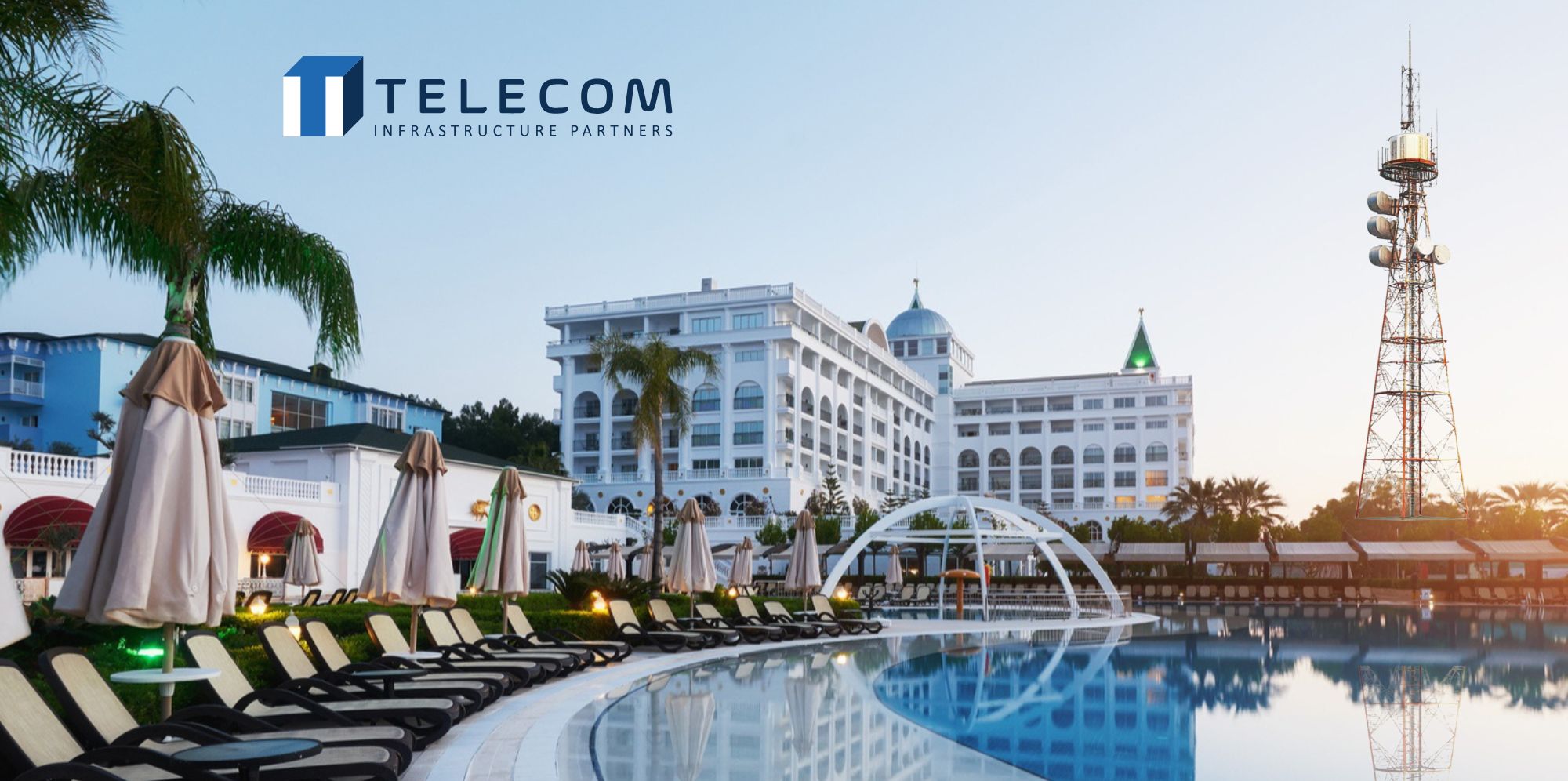The rollout of the 5G mobile network across the UK has been hit by significant delays as landowners and mobile network operators (MNOs) continue to wrangle over the installation of masts. This has left many UK customers unable to access fast 5G internet on their mobile phones, relying instead on slower 4G signals and even 3G in some rural areas.
Rent reductions and landowner disputes

MNOs have successfully lobbied the Conservative government to reduce the rents paid for masts on land owned by a range of groups, including charities, hospitals, farmers, supermarkets and churches. However, these rent cuts have led to widespread disputes, with many landowners either challenging the lower rents or withdrawing from mast deals altogether, a claim confirmed by leading property lawyer Luke Maidens of Blacks Solicitors.
The Electronic Communications Code (ECC), overseen by communications regulator Ofcom, governs the rent paid by MNOs to landowners. A Department of Science, Innovation and Technology (DSIT) spokesperson highlighted the importance of 5G in driving growth and productivity in the UK, stating: “5G is essential to driving growth and productivity in our country, but the rollout has not been fast enough so far. This government is committed to redoubling its efforts to achieve full 5G coverage by 2030.”
Impact of legal disputes
Since the introduction of the new Telecommunications Code in December 2017, there has been a dramatic increase in the number of cases brought to the Land Tribunal, which adjudicates commercial disputes between landowners and MNOs. There were 33 cases between 1984 and 2018. However, since 2017, the number of cases has risen to 1,028. These cases are now stuck in the courts, further delaying the rollout of 5G.
UK delays 5G rollout
The UK government has set a target for “all inhabited areas”, including rural communities, to have self-contained 5G coverage by 2030. However, the UK currently lags behind many countries in its 5G rollout, ranking 22nd out of 25 European markets and last among the G7 countries for download speeds.
Financial implications for landowners
Luke Maidens pointed out that the rent cuts had had a significant impact on landowners. “Where previously you could get rents of, say, £15,000 to £20,000 as a landowner for a mast in the city centre, now you’re lucky if you get three, four or five thousand pounds,” he said. Many landowners are now walking away from mast deals as contracts expire, finding the low rents and high removal costs too high.
Mobile operators perspective

Gareth Elliott, policy director at Mobile UK, which represents major operators such as EE, O2, Three and Vodafone, argued that mobile connectivity was essential in today’s society. He denied that removing the masts would be costly for landowners, as planning conditions usually require removal at the mast owner’s expense. He also stressed that the 2017 ECC reforms were intended to recognise mobile connectivity as essential national infrastructure.
Elliott stressed that while most landowners accepted the new rents and supported the expansion of mobile connectivity, some did not. Mobile UK maintained that the new, lower rents provided fair compensation for landowners while prioritising community benefits.
Calls for further reforms
Mobile UK is now campaigning for reform of the Labour government’s mobile infrastructure planning rules to speed up the rollout of 5G and further connectivity improvements. “A lot of [the Labour government’s] infrastructure ambitions will require good connectivity,” Elliott said.
Investments in mobile coverage
Operators say they have invested more than £500 million to improve mobile coverage in some of the UK’s most remote areas. Additionally, the government is investing £432 million in areas that are not commercially viable under the Shared Rural Network programme.
Sources
- UK 5G rollout hit by delays amid mast disputes – David Parsley, Chief News Correspondent, inews.co.uk
- Thousands of small landowners face huge rent cuts due to phone masts – Simon Neville, independent.co.uk
- The voice of UK mobile network operators.
- Luke Maidens, Head of Real Estate Litigation
Glossary of terms
Everything you need to know about 5G. 5G is the fifth generation of mobile networks, following 1G, 2G, 3G and 4G. It connects everyone and everything, including machines, objects and devices. The technology delivers higher data speeds, ultra-low latency, increased reliability, massive network capacity and a unified user experience. These advancements enable new user experiences and connect industries in innovative ways.
Evolution from previous generations:
- 1G (1980s) provided analog voice.
- 2G (early 1990s) introduced digital voice (CDMA).
- 3G (early 2000s) brought mobile data (CDMA2000).
- 4G LTE (2010s) improved mobile broadband internet.
5G extends these improvements with a more advanced air interface, increased capacity, and support for new services. It improves mobile broadband, enables mission-critical communications, and connects multiple IoT devices with faster data speeds, lower latency, and lower costs.
Economically, 5G is expected to generate $13.1 trillion in global output and create 22.8 million jobs over the next 15 years. Its full impact will be realized by 2035, supporting a variety of industries and driving economic growth.
5G deployment began in early 2019 and is now available in over 60 countries. Adoption is faster than previous generations, with more and more devices becoming 5G-compatible. The new technology represents a significant leap in global connectivity, transforming everyday mobile usage and enabling mission-critical communications and IoT on a massive scale.
Mobile network operators (MNOs) , also known as wireless service providers, mobile operators, or mobile telecommunications companies, are organizations that provide wireless communication services to subscribers. They operate and maintain the infrastructure necessary to provide services such as voice calls, text messages, and mobile data to mobile device users. MNOs own or have licensed access to the radio frequency spectrum necessary to transmit and receive signals over the air. They operate a network of cell towers and base stations that facilitate communications by connecting mobile devices to the network. They also manage the core network, which handles call routing, data traffic, and network management functions.
The services provided by MNOs include traditional voice calls, text messages via Short Message Service (SMS), and data services such as Internet access and multimedia messaging (MMS). They also offer additional services such as voicemail, call forwarding, international roaming, and value-added services such as mobile TV and mobile payments. MNOs can be categorized according to the technology they use. For example, GSM (Global System for Mobile Communications) operators use GSM technology and SIM cards to identify users and access the network, while CDMA (Code Division Multiple Access) operators use CDMA technology, which does not typically rely on SIM cards, although newer CDMA phones can use SIM cards for LTE.
In the UK, prominent MNOs include EE, Vodafone, O2 and Three. EE, a subsidiary of BT Group, is known for its extensive 4G coverage and rapidly expanding 5G network. Vodafone is another major player, offering a wide range of services and global roaming capabilities. O2, owned by Telefónica, stands out for its customer-focused services and extensive network. Three, part of CK Hutchison Holdings, is known for its competitive pricing and innovative data plans. The MNO market structure is competitive, with operators competing for customers by offering different plans and services. They are regulated by the national telecommunications authority, which oversees spectrum allocation, competition, pricing and service standards.
In addition to MNOs, there are also Mobile Virtual Network Operators (MVNOs) who do not own the infrastructure but lease capacity from the MNO to offer services to their customers. In the UK, examples of MVNOs include Giffgaff, which operates on the O2 network, and Tesco Mobile, which also uses O2’s infrastructure.
The Electronic Communications Code gives rights to providers of electronic communications networks and infrastructure (defined by Ofcom as ‘Code Operators’) to install and maintain equipment on, under and above the ground, including on public roads. If agreement cannot be reached with the private landowner, the Code allows operators to apply to the courts to enforce the agreement.
Ofcom is required to publish a Code of Practice for such contracts. In December 2017, following consultation with industry, Ofcom published an initial Code of Practice. Last year, Ofcom undertook a review of that Code and invited the NCA to propose changes. After considering the NCA’s recommendations, Ofcom published a consultation in September 2023 setting out the proposed changes.
Following the consultation, Ofcom has published its final Statement and updated Code of Practice. The new Code includes changes from the 2017 version and new elements, particularly around dispute resolution processes and best practice for Alternative Dispute Resolution (ADR) to ensure smooth deployment of telecommunications equipment.
What is Ofcom and what does it do? Ofcom, the UK’s communications regulator, will now more closely monitor the BBC’s website, YouTube channel and other content. The new responsibility follows government changes to make the BBC more accountable, driven by Culture Secretary Lucy Frazer. She has criticised the BBC for its impartiality issues. Ofcom, funded by the companies that oversee it, regulates broadcasting, post, mobile signals and Wi-Fi, and deals with complaints to ensure a fair service and protection for the public.
The Department of Science and Technology
(DOST) plays a key role in directing, guiding, and coordinating all scientific and technological initiatives and activities in the Philippines. This government agency is dedicated to ensuring that the results of these activities are strategically targeted and effectively utilized to maximize economic and social benefits for Filipinos. By supporting innovation and research, DOST aims to enhance the country’s development and improve the quality of life of its citizens. Through various programs and initiatives, DOST works to bridge the gap between scientific advances and practical applications, ensuring that technological advances translate into tangible improvements in industry, communities, and daily life.
What is the Land Tribunal? The Land Tribunal, established by the Lands Tribunal & Compensation Act (NI) 1964, deals with disputes about the value, use and development of land and buildings, dealing with appeals and direct disputes where permitted by law. Cases are referred by means of forms sent to the Registrar. Hearings are held mainly in the Royal Courts of Justice but may be held elsewhere. Legal representation is common due to the complexity of the cases. The length of cases varies and monthly updates are provided. Costs include the Tribunal’s fees and potential costs of the opposing party.
Full reasons for decisions are provided if there is a hearing, with appeals only to the Court of Appeal. Public decisions are available, except for private arbitrations. The Royal Courts of Justice offer facilities such as accessible parking, toilets, baby changing rooms and a café, plus a free Language Line service. Service standards include prompt opening hours, helpful staff, privacy in conversations and timely responses. The Court deals with restrictions of use, business leases, valuation appeals, land compensation and arbitrations, each with specific application procedures.
Shared Rural Network brings mobile broadband to rural communities across the UK . The Shared Rural Network (SRN) aims to deliver reliable mobile broadband to 95% of the UK, bridging the digital divide by improving 4G coverage in underserved areas. To find out more about the planned improvements in your region, visit the Forecast Coverage Improvements by Region page.
The UK’s four main mobile network operators (MNOs) – EE, Three, VMO2 and Vodafone – are working together to extend coverage to an additional 280,000 homes and 16,000km of roads. The initiative will also increase coverage in areas of natural beauty from 51% to 79% and in national parks from 41% to 74%, benefiting millions of visitors.
MNOs are investing £532 million to tackle “partial blackouts”, areas with coverage from only some operators. The UK government is providing £500 million to build new masts and tackle “complete blackouts”, areas with no coverage. The bulk of this funding will go to Scotland, with a detailed report available from Building Digital UK.
SRN’s sustainable strategy will improve 4G coverage without duplicating infrastructure, minimising environmental impact in rural areas. For more information, read the BDUK SRN Scotland report and visit the official SRN websites.



